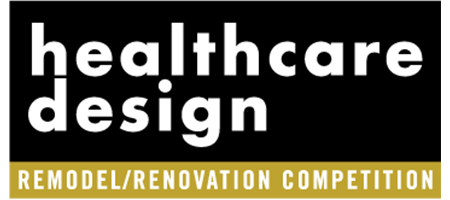Between 2008 and 2024, patient volume doubled from half a million to a million at Children’s Healthcare of Atlanta, Georgia’s only freestanding pediatric healthcare system. When Chris Chelette, now senior vice president of facilities services, came aboard the not-for-profit health system in 2016, it was already planning an expansion to accommodate this surge.
Specifically, the healthcare organization noticed that Egleston Hospital, one of its three facilities in the region, was experiencing growth pains from its constrained location in the middle of Emory University’s campus.
“We were using every square inch of Egleston and its 330 beds to the fullest amount possible,” he says. “We were very limited on parking and amenities, and traffic was a nightmare.”
As part of this growth strategy, the organization began to envision a replacement for Egleston on its North Druid Hills campus, nestled on 76 scenic acres north of Atlanta. Inspired by the picturesque setting, which includes more than 20 acres of green space, miles of walking trails, and expansive scenic views, the project team set a goal to “bring nature inside,” Chelette says. “That became the theme: How do we use nature to calm, to heal, to bring peace?”
The result is a 19-story facility that’s designed to embrace the therapeutic benefits of nature alongside cutting-edge technologies, with nature-inspired colors, natural materials, and sweeping views to help ground this massive construction project—the largest healthcare project in Georgia’s history, according to Children’s.
Opened in September 2024, the new Arthur M. Blank Hospital spans 2 million square feet, with 446 patient beds and services including hematology, oncology, cardiac, intensive care, emergency, surgery, and imaging.
Managing project scale
Approaching a healthcare project of this scope required extensive planning, a process that began four years before the project even broke ground in 2020 when Children’s engaged Atlanta-based contractors Brasfield & Gorrie and JE Dunn, architect of record and interior design firm ESa (Nashville), and associate architect for design Page (Atlanta).
“When a job of this scale comes around, you can’t just [estimate rough] square footage by looking at past projects,” says Dan Spinetto, vice president and regional operations manager at Brasfield & Gorrie, the contractor responsible for initial site development and construction of the hospital. “None of that historical data applies when you scale it across more than 450 patient rooms, because the magnitude of the ripple effect across so much square footage is huge.”
Chelette began meeting regularly with Spinetto in 2016 to discuss Children’s vision for the facility. “We spent hours validating assumptions and clarifying the scope,” Spinetto says. One of the first decisions they faced was determining the size and number of towers.
Although the site offered plenty of real estate to accommodate several sprawling low-rise facilities that could be quickly built in parallel with each other, constructing a high-rise tower required a longer timeline to build because it required topping off with a roof before interior work could begin.
Ultimately, the owner decided to “maximize height with the initial build, because vertically expanding in the future can be very operationally disruptive,” Spinetto explains. This decision set the stage for future horizontal growth across the campus by leaving plenty of open real estate for expansion, while shelled space on the top four floors of the tower provides room for growth.
Then, rather than waiting until the entire building was topped off to begin interior work, Brasfield & Gorrie decided to install temporary roofs along the way to enable interior work to happen in tandem with vertical construction.
Specifically, a temporary work platform on the 11th floor enabled early construction of the elevator infrastructure on the lower floors while progress continued on the top half of the tower. With 22 elevators in the structure, this head start was critical to keep construction ahead of schedule.
Embracing site surroundings
Once the architects and designers were engaged in 2018, they divided the building into three main components—lobby and other amenities, patient bed towers, and diagnostic/treatment areas—to make the massive project more manageable by tackling each component separately.
They broke down each piece further by assembling component teams to manage each trade, from sitework and structure to mechanical/electrical/ plumbing, exterior, and interior work—even assigning multiple teams of subcontractors to manage certain trades in the lower diagnostic floors, while others focused on the same type of work in the upper patient levels.
“When you’ve got several teams tackling one big project instead of just one big team, you’re much more efficient and productive,” Spinetto says.
As part of this component team approach, the contractor engaged design-assist partners early in the process to plan the skin and massing of the building. Design planning began by orientating the towers to optimize views of the surrounding scenery and cityscapes, following several studies to determine the precise angles of the patient wings.
This positioning captured panoramic views of downtown Atlanta, Stone Mountain, and the surrounding tree canopies and gardens, while also optimizing natural light through floor-to-ceiling windows in patient rooms and staff break areas.
Exterior, interior design strategies
For the exterior skin of the new campus building, the project team massed the patient towers with sleek glass curtain walls and metal panels, incorporating playful curved corners and undulating awnings to complement the surrounding scenery and the aesthetics of the existing buildings on campus.
“The glass tower becomes this amazing reflection of the sky, so it has this airy, ethereal feeling that changes throughout the day,” says Vanessa Lampe Heimbuch, principal and operations director at Page, the associate architect for design.
Inside the building, the designers embraced earthy tones and natural materials to designate public-facing spaces. “You want to bring that scale down where people are interacting with it,” Lampe Heimbuch says. “At the entrances and by the eatery, we selectively introduced phenolic wood-look panels and stone masonry to evoke nature, add warmth, and soften it up.”
Natural materials and muted nature-inspired colors continue throughout the patient-facing areas of the facility to extend this grounded theme throughout the building.
Blue and green furniture liven up the lobby, while support columns along the windows are topped with organically shaped green embellishments to simulate tree canopies. Sky blue shades from the lobby carry into the patient rooms, where wood accents create a cozy atmosphere.
Designing a hospital from the inside out
To ensure that the new hospital delivered on patients’ needs, the project team carefully incorporated input and feedback from users. Rather than starting with an estimated square footage and trying to squeeze certain features into the space allotted, the project team worked backward by building the layout around the components that clinicians, patients, and families wanted.
“We designed the hospital from the inside out by listening to our patient and family advisory groups and clinical team members to understand what their vision was,” Chelette says.
For example, patients requested simple amenities to make their parents’ lives easier—such as washers and dryers on every floor to avoid long wait times for laundry facilities, more space to store luggage, and comfortable double sleeper sofas to spend the night.
These ideas helped designers determine the configuration of patient rooms, which were sized about 50 percent larger than the rooms at Egleston—not only to give families more space, but also to meet higher acuity requirements to address future needs—incorporating standardized room layouts and fully-equipped headwalls that enable medical/surgical rooms to flex to intensive care units as needed.
The feedback also helped outline surrounding amenities, including a business center with computer workstations, additional sleeping rooms to accommodate families, and a chapel and prayer room for respite, in addition to staff break rooms and support spaces.
“These patient rooms and the support spaces start to define the size of the wings,” which became larger than average, both because the rooms were designed to higher acuity requirements and also to accommodate families’ needs, Lampe Heimbuch says.
Planning from the inside out also guided the layout of the towers, with 24 units arranged on each floor of each wing, and support spaces and amenities organized around the clinic pods to optimize adjacencies for staff and families alike.
Technology to support hospital operations
To enable a more efficient flow of materials throughout the massive building, the hospital incorporates innovative systems for transporting supplies, including one of the largest hospital-based fleets of autonomous mobile robots, which deliver medications and other materials to staff, saving time and labor.
Within the onstage/offstage layout of the new hospital, the project team coordinated circulation paths for these 90 autonomous vehicles, with separate routes for smaller robots that deliver meals and medications to patients while larger automatic guided vehicles (AGVs) move internal supplies behind the scenes.
Additionally, designated elevator cores for these mobile units are sized as large as standard patient elevators, enabling them to be used for other purposes if needed. “We designed dedicated vertical transportation cores for these robots and AGVs, but the elevators were sized not knowing what the future holds with this technology, so Children’s can utilize them to move people and carts should this technology ever be abandoned,” says Kevin Harney, vice president and principal of ESa.
Another expansive technology system leveraged throughout the hospital is a 20-inch pneumatic tube system to transport trash directly to the loading dock, decreasing the need for staff to manually move trash and waste.
“Just like the AGVs have their own depots on each floor, there are dedicated depots for this pneumatic tube system,” Harney says, adding that the chutes could also be used to transport dirty linens.
Planning for future hospital growth
Although the hospital wasn’t contractually structured for integrated project delivery (IPD), the project team embraced principles from this collaborative model to streamline the design process and engage partners during initial planning.
This team-based approach unlocked about $25 million in savings for the hospital while keeping the overall project about 5 percent under Children’s original budget, Spinetto says. Additionally, the hospital opened in September 2024, nine months ahead of the initial target. “A project of this size reinforces the need for early collaboration across all team members,” Harney says.
As a result of this keen planning and strategic design, the new hospital enhances the experience for patients, families, and staff alike. Aside from the increased capacity, “the amenities, the views, everything is just so much better,” Chelette says. “It’s impossible not to feel the difference as you walk in.”
Brooke Bilyj is a freelance writer and owner of Bantamedia (Cleveland) and can be reached at [email protected].
Arthur M. Blank Hospital project details:
Location: Atlanta
Completion date: September 2024
Owner: Children’s Healthcare of Atlanta
Total building area: 2 million sq. ft.
Total construction cost: Not disclosed
Cost/sq. ft.: Not disclosed
Architect: ESa
Associate Architect for Design: Page
Interior designer: ESa
General contractor: Brasfield & Gorrie, L.L.C.
Engineers: WSP USA (MEP), Walter P Moore (structural), Lowe Engineers (civil)
Medical equipment planner: Mazzetti
Art/pictures: Dimensional Innovations (wall graphics)
AV equipment/electronics/software: Planar
Carpet/flooring: Shaw, Mannington, Parterre, Nora, Res-Tek, David Allen Company, Louisville Tile, Daltile, Specialty Tile Products, Tarkett, Tarkett
Ceiling/wall systems: Armstrong, Inpro, Realstone, South Cypress, Sherwin-Williams, Marlite
Doors/locks/hardware: Allegion
Fabric/textiles: Arc-Com Fabrics, Momentum Textiles, Knoll Textiles, Designtex Fabrics, LDI Enviroleather, CF Stinson, Carnegie Fabrics, Maharam
Furniture—seating/casegoods: Wieland Healthcare Furniture, Integra Seating, Arcadia Furniture, Symphony Tables, Freshcoast, Krug Furniture, Bernhardt Design, IOA, Encore
Handrails/wall guards: Inpro
Headwalls/booms: Modular, Stryker, Hill-Rom Trumpf
Lighting: Neo-Ray, Kenall, Ecosense, Beacon, Visa Lighting, Pure Edge Lighting, Beta Calco
Signage/wayfinding: Fravert
Surfaces—solid/other: 3-Form, Lumicor, Wilsonart, Formica, Pionite, Corian
Wallcoverings: Colour & Design
Other: Karl Storz (OR integration); Aethon (AGVs); Harmon (curtainwall); Viracon (exterior glazing); Centria Formawall, Versawall, Larson by Alucoil (metal panels); Trespa (high-pressure laminate); Novum (canopies)
Project details are provided by the design team and not vetted by Healthcare Design.












